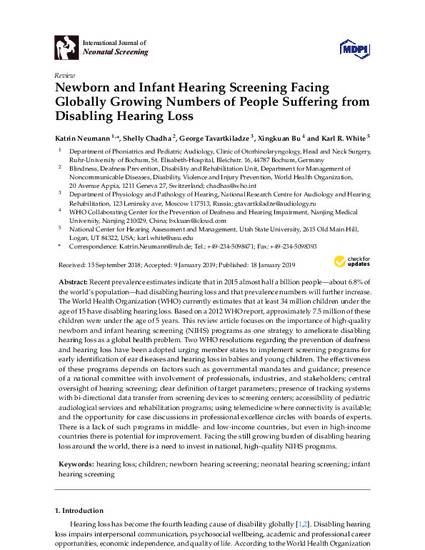
Recent prevalence estimates indicate that in 2015 almost half a billion people—about 6.8% of the world’s population—had disabling hearing loss and that prevalence numbers will further increase. The World Health Organization (WHO) currently estimates that at least 34 million children under the age of 15 have disabling hearing loss. Based on a 2012 WHO report, approximately 7.5 million of these children were under the age of 5 years. This review article focuses on the importance of high-quality newborn and infant hearing screening (NIHS) programs as one strategy to ameliorate disabling hearing loss as a global health problem. Two WHO resolutions regarding the prevention of deafness and hearing loss have been adopted urging member states to implement screening programs for early identification of ear diseases and hearing loss in babies and young children. The effectiveness of these programs depends on factors such as governmental mandates and guidance; presence of a national committee with involvement of professionals, industries, and stakeholders; central oversight of hearing screening; clear definition of target parameters; presence of tracking systems with bi-directional data transfer from screening devices to screening centers; accessibility of pediatric audiological services and rehabilitation programs; using telemedicine where connectivity is available; and the opportunity for case discussions in professional excellence circles with boards of experts. There is a lack of such programs in middle- and low-income countries, but even in high-income countries there is potential for improvement. Facing the still growing burden of disabling hearing loss around the world, there is a need to invest in national, high-quality NIHS programs.
